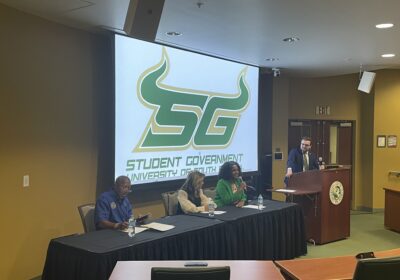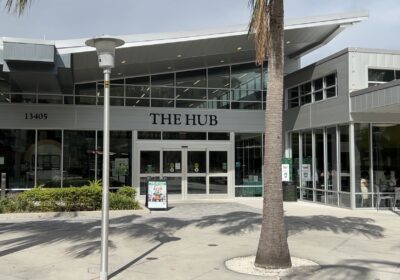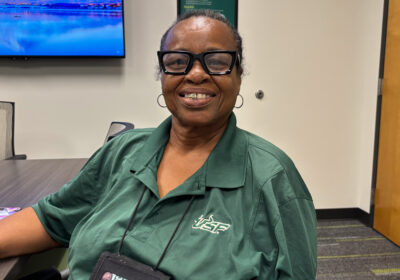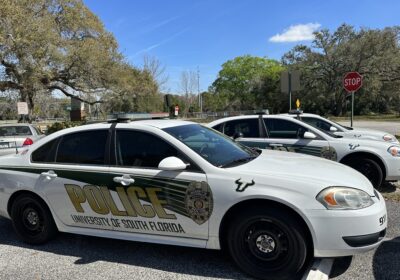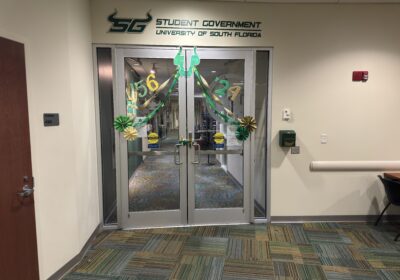USF prepares for spring semester, Phase II still in effect
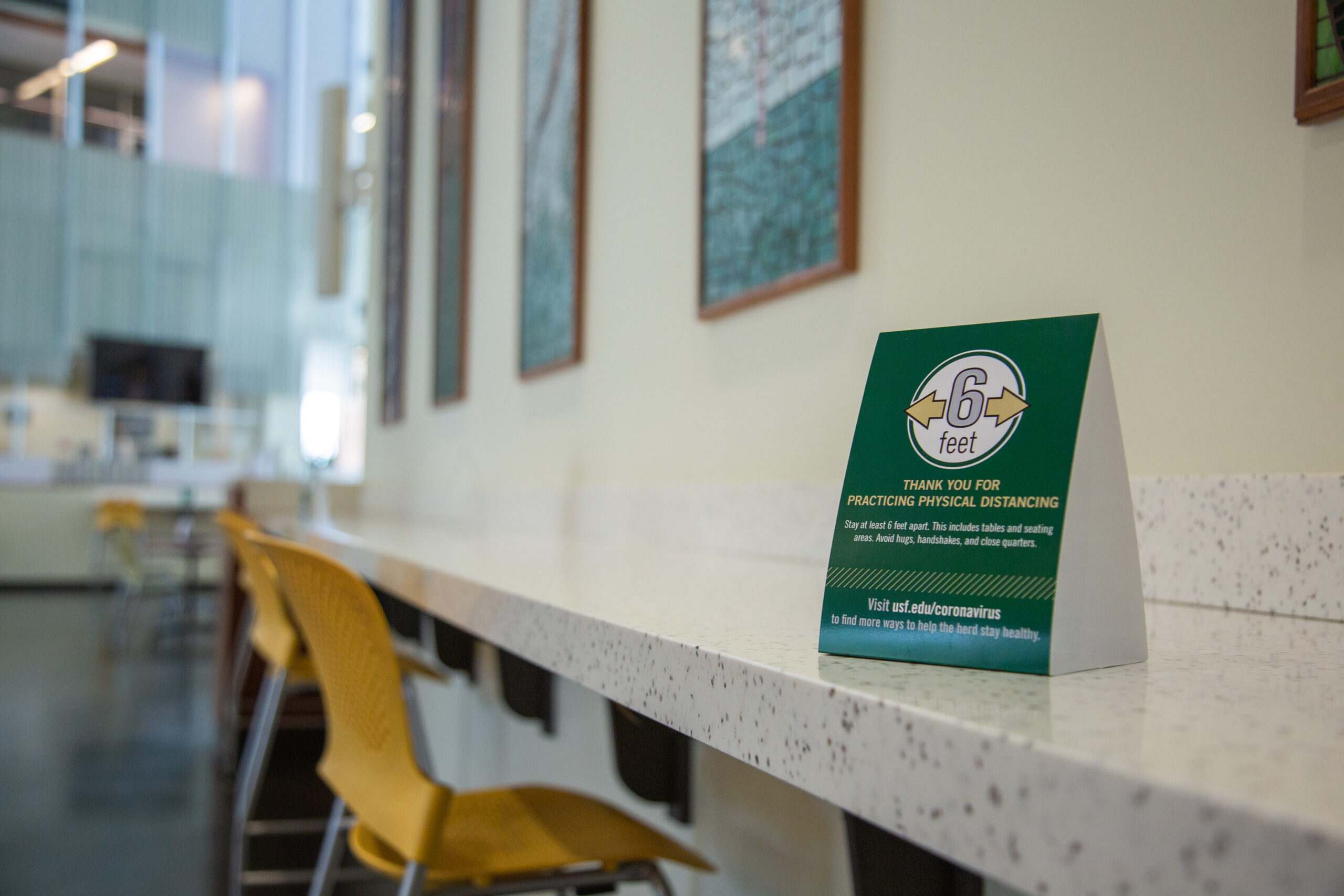
The university has watched the number of COVID-19 cases climb as it welcomed back students for the fall semester. Now, USF is making preparations for the spring semester regardless of the uncertainties around COVID-19.
Despite Florida starting Phase III of its reopening plans, College of Public Health Dean and COVID-19 Task Force Chair Donna Petersen said Gov. Ron DeSantis’ latest decision will not impact USF’s plan. The university is still in a modified Phase II of the Resuming University Operations Amid a Global Pandemic plan, and there are no plans to move into Phase III in the near future, according to Petersen.
Featuring enhanced safety precautions, Phase II allows for up to 50% of staff returning to campuses and courses to be delivered through face-to-face, hybrid and online instruction.
The university began Phase II on Aug. 7 and plans to continue with it for a while. Petersen said the university is continuing to monitor data across campuses and the surrounding community. There’s no estimate of when Phase III will begin.
“When we feel comfortable that the trends are in the right direction and they have been sustained for a period of time and we will consider moving ahead, but right now we’re not in that position yet,” Petersen said.
When it comes to the spring semester, Petersen said it will look similar to fall in course delivery and safety protocols.
“Now that we’ve had some good experience with these different modalities for teaching and learning, the sort of hybrid class structure seems to work pretty well, so we hope to be offering more classes in that format because students seem to like that,” Petersen said.
“We’re planning right now as though nothing changes. We are hopeful that if the case numbers stay down here and in the counties around us, then maybe we can open up a little more and have fewer restrictions and that would allow for something, perhaps, that looks more like what you remember in the past. But we’re still being conservative because our number one priority remains health and safety.”
The university will be finalizing its course schedules Oct. 5. With that, students should know the final decision regarding spring break.
UF canceled its March spring break and extended winter break by a week, shifting the start of the spring semester from Jan. 5 to Jan. 11. FSU also canceled its spring break, but instead of extending its winter break by a week, it will end the spring semester April 23, a week earlier than originally planned.
Such actions were taken to prevent a spike in the number of positive cases due to travel. USF has taken a step toward preventing a rise in the number of cases by shifting all courses to remote delivery after Thanksgiving break.
“We’re trying to predict the future,” Petersen said. “We don’t know what the virus is going to be doing, we don’t know if there’s going to be an effective vaccine, we don’t know who might have achieved herd immunity by then and we don’t know what our Thanksgiving experience will look like, but we have to make the decision pretty soon.
“Whatever decision we make will have implications in some way, shape or form, so we’re trying to gather as much data as we can gather, understanding that the data we really want aren’t available to us because we can’t predict it.”
However, not all holidays were shifted, and Labor Day weekend attests to it.
A spike in the number of cases following Labor Day weekend was expected, according to Petersen. On Sept. 7, the total number of cases reported at the Tampa campus was 196, while St. Pete reported 14. Since then, the numbers have significantly increased in Tampa, with 449 cases reported as of Sept. 30.
“We hoped we wouldn’t see it, but we expected it,” Petersen said. “We’ve seen it in the county, and we’ve seen it amongst our students and some employees but primarily students. The good news is it was not as bad as it could have been. We did not see evidence of any big clustering, which is great. And we’re already starting to see the numbers go down, which is also great, so I think that means that wave has come and is fading.”
Between Sept. 18 and 30, there was a 29.02% increase in the number of cases reported at the Tampa campus. The number went up from 348 to 449 cases.
Students living on campus are required to self-isolate for a period of at least 10 days. The on-campus isolation spaces are located in Cypress Suites. Students who tested positive are relocated to Cypress B, and students who tested negative are relocated to Cypress A.
As of Sept. 29, there were 29 students isolated on the Tampa campus with zero on the St. Pete campus, according to USF spokesperson Adam Freeman. He said the university does not keep a total count of students that have been in isolation for the semester.
Over a month has passed since the university began randomly testing around 300 students per week. If selected, students must schedule an appointment through Student Health Services (SHS) or if they have been tested in the last 14 days, self-report their results.
The random sample is done through a pooled testing method, where a saliva sample is gathered from an individual and then “pooled” together in a lab with other five samples. If the pool comes back positive, the group of samples in the “pool” will then be asked to test individually for COVID-19.
“We were so happy when we realized we could do it with saliva. And it turns out it’s more reliable because you’re breathing out particles so you have a greater chance of detecting it in saliva than you do in a nose swab,” Petersen said.
While the diagnostic test is done at SHS, Petersen said the pool testing is done at the USF College of Public Health. She said results are made available the same day.
About 685 individuals have been tested through SHS since the start of the fall semester. From the random tests, eight positive cases were identified, resulting in a prevalence rate of 1.26%.
Besides random testing, the university is also performing environmental sampling of high-touch surfaces including elevator buttons, doorknobs and bathroom fixtures to detect the virus’ existence. Petersen said the virus was only found during the first week of the fall semester in one of the residence halls and since then, the university has been rethinking its need.
“The good news is the fact that we found from the first week means the sampling works. And the fact that we’re now not finding any either means people are washing their hands like they’re supposed to and that the cleaning protocols are working,” Petersen said.
“We’re actually rethinking whether this is a worthwhile strategy because it takes up space in the lab.”
If an individual is not selected for random pooled testing, they can still visit SHS to get tested for COVID-19. As of Sept. 30, SHS administered 4,501 tests, of which 260 were positive. Around 793 tests are performed every week, according to Freeman.
“Testing through Student Health Services is only one part of the university’s surveillance strategy to detect the presence of the virus on campus, which also includes the daily symptom check app, environmental sampling of high-touch surfaces and random pooled testing,” Freeman said.
From monitoring the data around COVID-19 to predicting the structure of future semesters, Petersen said she is learning with the experiences from this semester so she can apply the knowledge in future decisions.
“We learn as we go,” Petersen said. “Every day, we learn and try to get better.”
Stay with The Oracle for weekly updates on COVID-19. Click here to access the COVID-19 dashboard.

